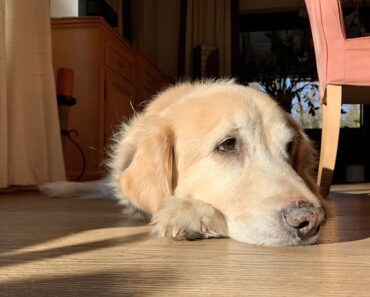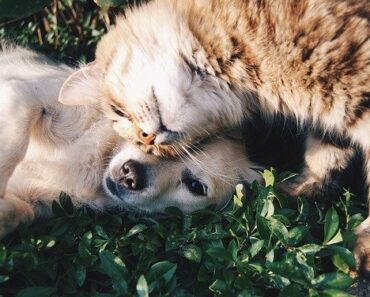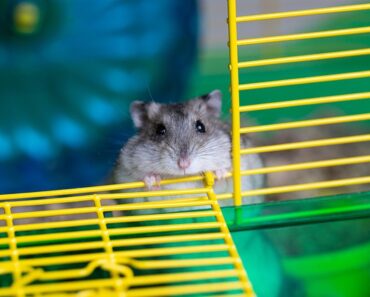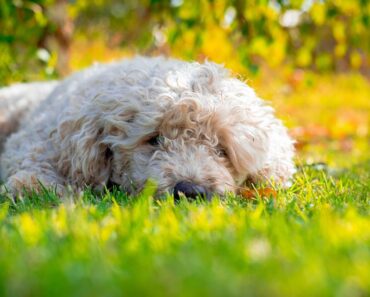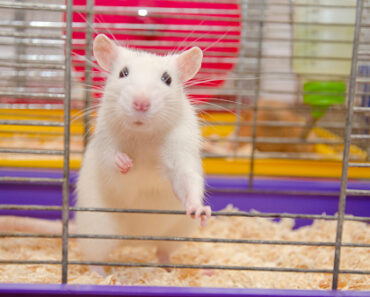
Like humans, our pets can suffer from dental problems. It is important to know a few tricks to slow down or prevent such inconveniences.
The importance of food intake
Teething problems are not the same between our domestic carnivores (dogs, cats) and our rodents and rabbits, due to their different diets.
Rodents and rabbits
First of all, we must remember that these species are caecotrophic, that is to say that these animals ingest part of their excrement during the day, recovering it directly from the anus. This is a normal process that allows them to recover proteins, fatty acids and vitamins. A dental problem can then prevent them from performing this act and thus cause nutritional deficiencies.
Overall, the food ration of these animals is composed of hay, green food or granules of vegetable origin or even fruit. It should be remembered that in the wild, for example, rabbits feed on 80% grass (and therefore fibre). In the end, their ration must be rich in fiber. Their teeth are therefore adapted to this type of diet. Some rodent and rabbit teeth have a continuous growth, meaning that they grow throughout their lives, unlike dogs, cats or humans. It is therefore necessary that these teeth wear out gradually so that they do not become too long.
Thus, if the ration does not contain enough fiber (not enough hay and too many pellets), the teeth will not wear out properly because the animal’s chewing activity will be insufficient. This can lead to dental malocclusion problems: the teeth grow too much and/or in the wrong direction and thus prevent the animal from feeding properly.
This malpositioning of the teeth can affect the different categories of teeth:
- The upper incisors can curl back into the mouth and perforate the palate.
- the lower incisors may become deformed and push too far forward, causing injury to the upper lip or palate.
- the molars can form tips or bend in a circle and can then cause injury to the tongue.
It is important to know that these malocclusion problems are often hereditary and therefore it is important to avoid breeding animals with this type of problem.
Domestic carnivores: dogs and cats
Historically, our dogs and cats eat meat from either small rodents or rabbits they hunted or from kitchen scraps donated by the owners. Nowadays, solid food in croquettes or wet food in pâté has largely replaced these eating habits.
One of the most common dental diseases in our dogs and cats is tartar. One calls this phenomenon the periodontal disease: it is about a proliferation of bacteria in abnormal quantity associated with an ignition of the gums (gingivitis). This invisible layer of bacteria forms continuously on the teeth (even if they are clean): the tartar appears after crystallization of this layer. We understand the importance of this disease when we know that 2/3 of dogs over 3 years old and 80% of dogs over 5 years old are affected. In addition, this disease can have serious consequences on your pet’s overall health, in addition to causing bad breath and tooth damage since the bacteria present in excess in the mouth can then circulate in the body and cause other types of diseases (heart disease, …).
There are also breeds of dogs predisposed to tartar: most often small dogs (Dachshund, King Charles rider, Bichon, Yorkshire…). Cats are less affected by tartar, with about 30 to 70% of cats affected depending on the study.
It should be noted that wet food (mash) favors the appearance of this disease compared to the use of dry food (kibble). This is explained by the fact that the dog or cat has to use its teeth more to eat kibble than food and that there is therefore a natural mechanical action that slows down the formation of tartar. In addition, some treats are not good for the vitality of your pet’s teeth. Sweet and sticky treats are to be avoided at all costs and you should avoid using a diet that is too rich.
Some kibble packages are also specially designed to reduce the appearance of tartar. These are kibbles whose composition or shape are modified in order to counteract the installation of this disease by increasing the abrasive action of the food on the teeth.
Another possibility is the use of bone/chew bar or dental slide. The dog often regards these supplements as a treat and the purpose of these products is to encourage chewing. In addition, their texture maximizes the self-cleaning effect and helps to reduce the accumulation of dental deposits.
The Importance of Oral Care
Brushing the teeth of dogs and cats
In order to avoid the formation of too much tartar, brushing the teeth remains the best alternative, especially for small dogs. Brushing your dog’s teeth 3 to 5 times a week with a brush and toothpaste specially designed for dogs helps reduce the risk of tartar build-up and maintain healthy gums. However, it is obvious that this is not the easiest method to use and it depends on the docility of your pet. It is advisable to combine brushing with the use of a chew bar to obtain a better preventive result. Brushing the teeth is also recommended for cats. Even if it is obvious that it is difficult to enforce the rules of tooth brushing by a cat owner, it should not be considered impossible. Patience and motivation are often the keys to surprising preventive results.
Dental gels or products to put in drinking water
It is also possible to use dental gels that protect your pets’ teeth because they contain enzymes that can slow down the formation of plaque by bacteria. However, as with brushing, you must put the gel on your dog or cat’s teeth yourself. Another alternative is the use of products to be put in drinking water that contain ingredients that promote good dental health.
Monitoring the milk teeth of dogs and cats
In our domestic carnivores, it is possible that some milk teeth do not fall out. It is important to be aware of it because this favors the appearance of the periodontal disease. An oral examination by your veterinarian towards the beginning of puberty of your pet allows to make sure that the dentition is correctly arranged, and allows if need be to extract the supernumerary teeth.
Visits to the veterinarian
Whether it is for our rodents, rabbits or for our dogs and cats, the veterinarian remains the best referent to give advice and evaluate the oral health of your animals. It is therefore important to make regular visits. Certain problems can easily be solved, such as teeth that grow too much in rodents: the veterinarian can file or cut off the excess part and advise you on a change of diet to be implemented.
For carnivores, regular scaling is recommended: often from 5-6 years old in dogs and a little later in cats, with a frequency of once every 2 years or so. It is important to note that scaling is always done under general anesthesia. The frequency of scaling depends a lot on the breed since some small dogs will develop tartar early in life and will require more frequent scaling. In these cases, it is advisable to use preventive measures such as a good diet, brushing, etc., which will reduce the frequency of scaling and the associated anesthesia.

